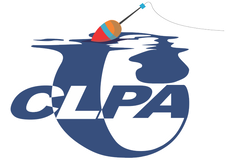Chetek Lakes Comprehensive Lake Management Plan Executive Summary:
"This Comprehensive Lake Management Plan contains lake restoration projects that include in-lake activities intended to increase the recreations and environmental values of the lakes. These projects include aeration, drawdown, habitat restoration, dredging, iron addition, and hypolimnetic withdrawal. The Association will support county- and federal-led watershed management activities for nonpoint source pollution prevention and control practices in the farm dominated landscape surrounding the lakes.
Lake Management Goals and Objectives
• Goal 1: Reduce algal bloom frequency by 25% during the summer months in the chain of lakes.
• Goal 2: Continue to follow the Aquatic Plant Management Plan and incorporate as a companion document to this plan.
• Goal 3: Enhance fishery and wildlife habitat in and around the chain of lakes.
• Goal 4 Track, evaluate and revise the plan as new information and data are acquired."
"This Comprehensive Lake Management Plan contains lake restoration projects that include in-lake activities intended to increase the recreations and environmental values of the lakes. These projects include aeration, drawdown, habitat restoration, dredging, iron addition, and hypolimnetic withdrawal. The Association will support county- and federal-led watershed management activities for nonpoint source pollution prevention and control practices in the farm dominated landscape surrounding the lakes.
Lake Management Goals and Objectives
• Goal 1: Reduce algal bloom frequency by 25% during the summer months in the chain of lakes.
• Goal 2: Continue to follow the Aquatic Plant Management Plan and incorporate as a companion document to this plan.
• Goal 3: Enhance fishery and wildlife habitat in and around the chain of lakes.
• Goal 4 Track, evaluate and revise the plan as new information and data are acquired."
2024 Aquatic Plant Management Plan For Chetek Lakes (Executive Summary):
The Chetek Chain of Lakes totals approximately 3,362 acres, consisting of five interconnected lakes:
Prairie Lake, Ojaski Lake, Pokegama Lake, Tenmile Lake, and Lake Chetek. The Chetek Lakes are a
very productive (nutrient rich), highly eutrophic system with a long history of excessive nutrients and
infestation by curly-leaf pondweed. This plan is intended to establish long-term and realistic
objectives for managing non-native and nuisance native aquatic plant growth while protecting and
rehabilitating valuable native species and their critical habitat functions. The plan is based on 2022-
surveyed aquatic plant community data, input and review from the Chetek Lakes Protection
Association (CLPA), information gathered from local residents, and goals and objectives for the
Chetek Chain of Lakes.
This Aquatic Plant Management (APM) Plan was developed under the sponsorship of the CLPA. This
plan is an update to the APM Plan that was originally developed in 2012. In 2022 the CLPA was
awarded Wisconsin Department of Natural Resources (WDNR) Surface Water Grant funding to
complete an updated APM Plan for the Chetek Chain of Lakes.
The CLPA is a local non-profit, volunteer-based organization whose mission is to “preserve and
protect the Chetek Lakes, and their surroundings, and to enhance the water quality, fishery, boating,
safety, and aesthetic values of the Chetek Lakes, as a public recreational facility for today and for
future generations.”
Aquatic plant management in the Chetek Chain follows five goals, each with associated objectives
and actions. While the goals are inclusive of all of the Chetek Lakes, some of the objectives and
actions vary between lakes. Any major change in activities or management philosophy should be
presented to the CLPA and the WDNR for approval.
Plan Goals
1. Manage the population of known and existing aquatic invasive species.
2. Prevent the introduction of aquatic invasive species.
3. Promote the protection and expansion of native aquatic species.
4. Improve water quality via promoting nutrient management.
5. Improve access routes where restricted by nuisance vegetation.
The Chetek Chain of Lakes totals approximately 3,362 acres, consisting of five interconnected lakes:
Prairie Lake, Ojaski Lake, Pokegama Lake, Tenmile Lake, and Lake Chetek. The Chetek Lakes are a
very productive (nutrient rich), highly eutrophic system with a long history of excessive nutrients and
infestation by curly-leaf pondweed. This plan is intended to establish long-term and realistic
objectives for managing non-native and nuisance native aquatic plant growth while protecting and
rehabilitating valuable native species and their critical habitat functions. The plan is based on 2022-
surveyed aquatic plant community data, input and review from the Chetek Lakes Protection
Association (CLPA), information gathered from local residents, and goals and objectives for the
Chetek Chain of Lakes.
This Aquatic Plant Management (APM) Plan was developed under the sponsorship of the CLPA. This
plan is an update to the APM Plan that was originally developed in 2012. In 2022 the CLPA was
awarded Wisconsin Department of Natural Resources (WDNR) Surface Water Grant funding to
complete an updated APM Plan for the Chetek Chain of Lakes.
The CLPA is a local non-profit, volunteer-based organization whose mission is to “preserve and
protect the Chetek Lakes, and their surroundings, and to enhance the water quality, fishery, boating,
safety, and aesthetic values of the Chetek Lakes, as a public recreational facility for today and for
future generations.”
Aquatic plant management in the Chetek Chain follows five goals, each with associated objectives
and actions. While the goals are inclusive of all of the Chetek Lakes, some of the objectives and
actions vary between lakes. Any major change in activities or management philosophy should be
presented to the CLPA and the WDNR for approval.
Plan Goals
1. Manage the population of known and existing aquatic invasive species.
2. Prevent the introduction of aquatic invasive species.
3. Promote the protection and expansion of native aquatic species.
4. Improve water quality via promoting nutrient management.
5. Improve access routes where restricted by nuisance vegetation.


